Yukdampokpo Falls (육담폭포)
2021-07-14
Seoraksan-ro, Sokcho-si, Gangwon-do
+82-33-801-0900
If you begin at Seorak-dong in Oeseorak, cross the Biryonggyo Bridge and pass by the Biryongpokpo Falls, you will reach Yukdampokpo Falls, which actually consist of six waterfalls and a pond.
Despite the fact that only a small amount of water actually flows in these waterfalls today, what is interesting, is how they came into existence: a slow-flowing stream of water eroded the rocks, creating dips and puddles at various levels, which later became a series of cascading waterfalls. The splendid scenery around the waterfalls is always a pleasing sight to the eyes of visitors.
Daegeumgul Cave - Daei-ri Cave Area (대금굴 (대이리 동굴지대))
2025-01-07
800, Hwanseon-ro, Samcheok-si, Gangwon-do
+82-33-541-7600
Daegeumgul Cave is believed to be as old as Hwanseongul and Gwaneumgul Caves located nearby. The entrance to the cave was exposed during an excavation project, and after a long preparatory period, the cave was opened to the public. This newly opened, well-preserved cave is filled with limestone features such as stalactites, and a considerable amount of water flows through the cave, creating waterfalls, both large and small, along with numerous ponds.
BIFF Square (BIFF 광장)
2024-10-29
4 Nampo-gil, Jung-gu, Busan
+82-1688-3010
Busan’s modern movie district was originally little more than a pair of cinemas that were built following Korea’s liberation from Japanese colonial rule over half a century ago. However, major renovations took place ahead of the first Busan International Film Festival (BIFF), and the newly transformed district was named BIFF Square on September 13, 1996.
Having been remade into a cultural tourist attraction promoting the advancement of Korea’s film industry, BIFF Square has contributed to Busan’s status as an international cultural tourist city. The 428 meter-long street stretching from the Buyeong Theater in Nampo-dong to the overpass in Chungmu-dong was divided into “Star Street” and “Festival Street,” and on the eve of the festival each year the “BIFF Square Ground Opening” is held here. During the ceremony, events such as the hand printing of famous movie celebrities and Nunkkot Jeomdeung (snow-flower lighting) take place. A district such as BIFF Square, crowded with first-run theaters in a city is rare not only in Asia but Europe as well, and for this reason it holds great potential. In recent years, the square has grown into a more complex area, featuring not only movie theaters but also shops and leisure facilities, attracting growing numbers of young visitors and tourists.
Paraesopokpo Falls (파래소폭포)
2021-06-16
200-78, Eoksaebeol-gil, Ulju-gun, Ulsan
+82-52-254-2123
Paraesopokpo Falls is located in Baenaegol Valley, connected to the foothills of Ganwolsan and Sinbulsan Mountains. The falls and surrounding valley are a popular attraction during the summer among vacationers and hikers eager to escape from the summer heat. The falls' water flows into Baenaecheon Stream, which later merges with the Nakdonggang River.
Daejeon Expo Park (대전엑스포과학공원)
2025-08-06
480 Daedeok-daero, Yuseong-gu, Daejeon
+82-42-250-1111
Daejeon Expo Park was established following the closing of the Daejeon Expo in 1993. The park comprises various facilities like the Hanbit Tower, the representative tower of Daejeon World Expo, and a water plaza with a musical fountain. At night, a fabulous media facade and special lighting effects create an awesome scene against the backdrop of Hanbit Tower.
Olympic Park (올림픽공원)
2023-10-19
424 Olympic-ro, Songpa-gu, Seoul
+82-2-410-1114
Olympic Park is an impressive leisure facility in which historic remains from the Baekje era share space with modern, state-of-the-art sports stadiums, an eco-friendly forest, and spacious grass fields. The legacy of the 1988 Seoul Olympics, the park not only houses the country’s largest sports arena, but has also become a place where Seoul residents come to relax and unwind.
Spread across approximately 1.45 million square meters, Olympic Park encompasses the land that was once Mongchontoseong Fortress and Mongchonhaeja (manmade lake) from the early Baekje period. The park is divided into several zones, including a leisure sports park, a cultural art park, an eco-park, and the History Experience Park dedicated to the area’s rich historic heritage.
Because Olympic Park is so large and takes over three hours to explore, visitors are advised to familiarize themselves with entrances and exits and travel routes before they start. To further save time, visitors can ride the Road Train (“Hodori Train”) located next to Peace Square.
Yangju Olleung Royal Tomb [UNESCO World Heritage] (양주 온릉(단경왕후) [유네스코 세계문화유산])
2025-01-07
255-41, Hoguk-ro, Yangju-si, Gyeonggi-do
+82-31-855-5228
Olleung Royal Tomb is the royal tomb of Queen Dangyeong (1487-1557), consort of King Jungjong, the 11th ruler of the Joseon dynasty. Queen Dangyeong married King Jungjong when she was 13 years old. In 1506, when King Jungjong ascended to the throne, she became a queen as well, but she was deposed due to her father leading a coup against her husband's acendancy. Therefore, her grave was not regarded as a royal tomb until 1739.
Seoul Forest (서울숲)
2024-10-29
273 Ttukseom-ro, Seongdong-gu, Seoul
+82-2-460-2905
Seoul Forest is a city park opened on June 18, 2005 in what was originally a water treatment facility. Consisting of four themed parks spread over approximately 595,000 ㎡ of land, Seoul Forest is an eco-friendly zone appreciated not only by the people of the city but also those visiting Seoul.
Bengdwigul Cave [UNESCO World Natural Heritage Site] (제주 선흘리 벵뒤굴 [유네스코 세계자연유산])
2022-12-27
Jocheon-eup, Jeju-si, Jeju-do
+82-1600-0064
With a total length of 4,481 meters, Bengdwigul Cave is shaped like a maze and has one of the most complex lava tube structures in the world. For geologists, this cave is invaluable since it demonstrates how lava continuously flowed over the surface of the ground and the complex route it took to eventually form a tube deep underground. Created particularly close to the earth’s surface, this cave has a number of entrance holes to the tunnel. Inside, the complex structure of the cave unfolds in the form of double-tiered or triple-tiered rooms. A range of lava formations such as lava columns and lava bridges have developed inside this mystical tube.
* The UNESCO World Heritage designated Geomunoreum Lava Tube System of Bengdwigul, Manjanggul Cave, Gimnyeonggul, Yongcheondonggul and Dangcheomuldonggul Caves.
Yongcheondonggul Cave [UNESCO World Natural Heritage Site] (용천동굴 [유네스코 세계자연유산])
2020-11-27
Woljeong-ri, Jeju-si, Jeju-do
+82-1600-0064
Yongcheondonggul Cave is the most typical form of lava tunnel on Jeju Island and with a total length of approximately 2,470 meters, it is one of the largest. It has a unique topology and rich limestone formations such as lava terrace, lava shelves, lava waterfalls, and 140 meters of lava rolls. In particular, a range of carbonate formations such as straw soda, stalactite, columns, flowstones, cave corals, and aragonite crystals can be found inside this large cave that also contains a lake. This unique cave is astounding in terms of its geological value and beauty. There are also items that can be found throughout the cave that appear to have been brought in by people who lived on the island long ago, such as pieces of pottery, animal bones, ironware, charcoal and other substances.
* The UNESCO World Heritage inscribed Geomunoreum Lava Tube System consists of Bengdwigul, Manjanggul, Gimnyeonggul, Yongcheondonggul and Dangcheomuldonggul Caves.
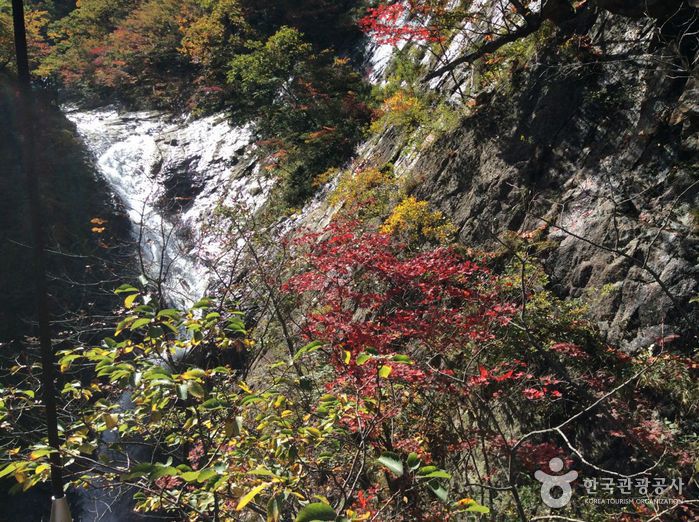
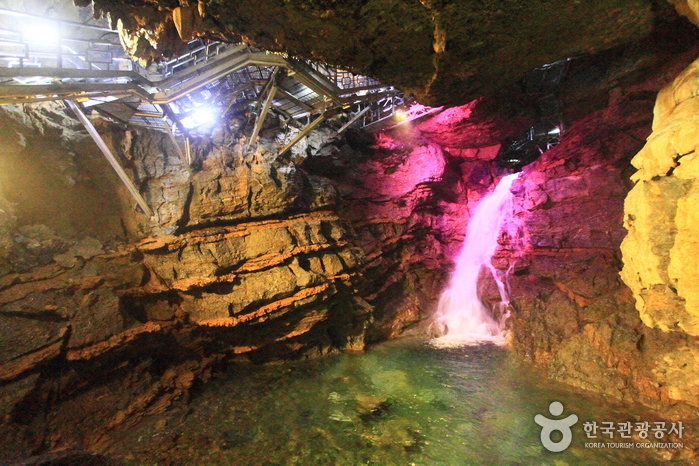
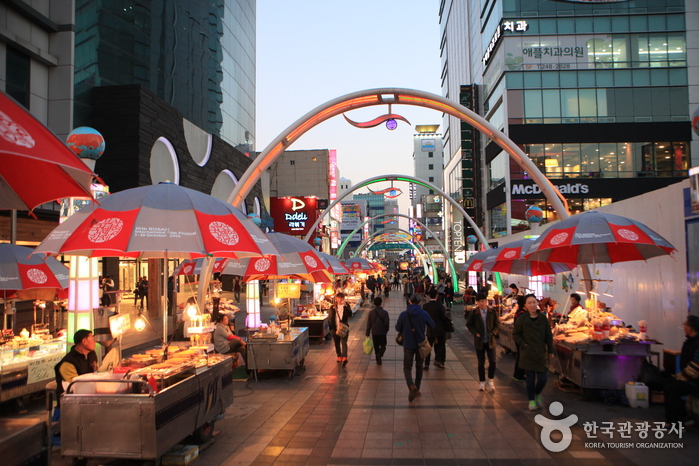
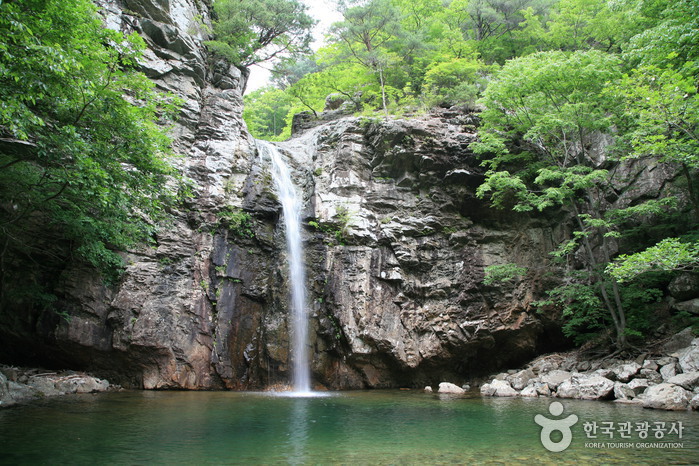
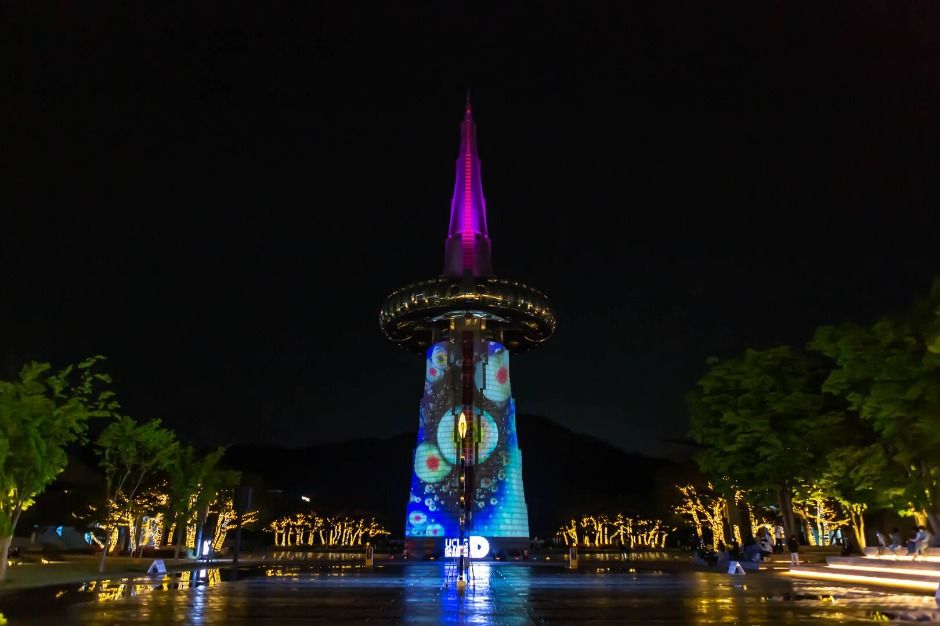

![Yangju Olleung Royal Tomb [UNESCO World Heritage] (양주 온릉(단경왕후) [유네스코 세계문화유산])](http://tong.visitkorea.or.kr/cms/resource/10/757410_image2_1.jpg)

 English
English
 한국어
한국어 日本語
日本語 中文(简体)
中文(简体) Deutsch
Deutsch Français
Français Español
Español Русский
Русский